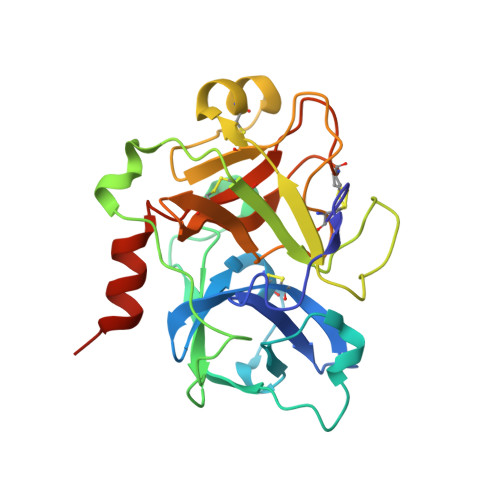Novel phenylalanine derived diamides as Factor XIa inhibitors.
Smith, L.M., Orwat, M.J., Hu, Z., Han, W., Wang, C., Rossi, K.A., Gilligan, P.J., Pabbisetty, K.B., Osuna, H., Corte, J.R., Rendina, A.R., Luettgen, J.M., Wong, P.C., Narayanan, R., Harper, T.W., Bozarth, J.M., Crain, E.J., Wei, A., Ramamurthy, V., Morin, P.E., Xin, B., Zheng, J., Seiffert, D.A., Quan, M.L., Lam, P.Y., Wexler, R.R., Pinto, D.J.(2016) Bioorg Med Chem Lett 26: 472-478
- PubMed: 26704266
- DOI: https://doi.org/10.1016/j.bmcl.2015.11.089
- Primary Citation of Related Structures:
5E2O, 5E2P - PubMed Abstract:
The synthesis, structural activity relationships (SAR), and selectivity profile of a potent series of phenylalanine diamide FXIa inhibitors will be discussed. Exploration of P1 prime and P2 prime groups led to the discovery of compounds with high FXIa affinity, good potency in our clotting assay (aPPT), and high selectivity against a panel of relevant serine proteases as exemplified by compound 21. Compound 21 demonstrated good in vivo efficacy (EC50=2.8μM) in the rabbit electrically induced carotid arterial thrombosis model (ECAT).
Organizational Affiliation:
Research and Development, Bristol-Myers Squibb Company, P.O. Box 5400, Princeton, NJ 08543, United States. Electronic address: [email protected].

















